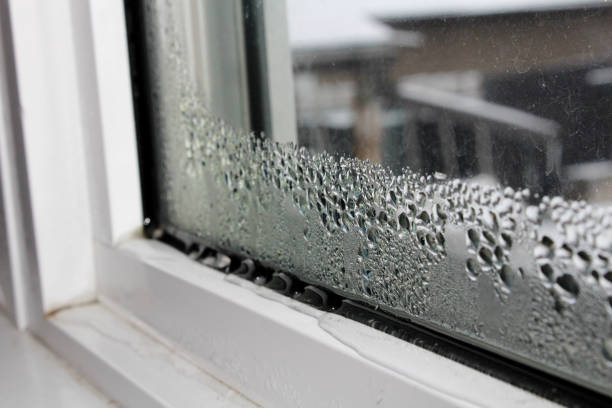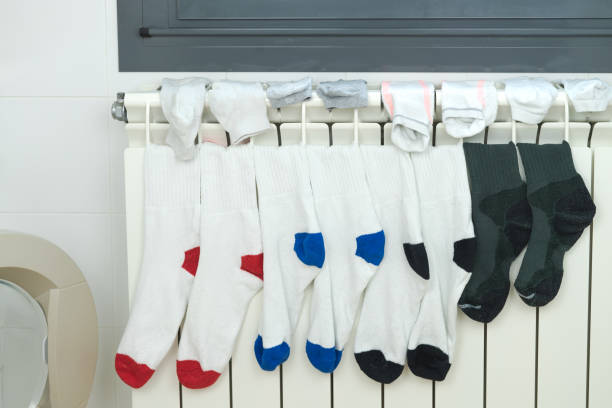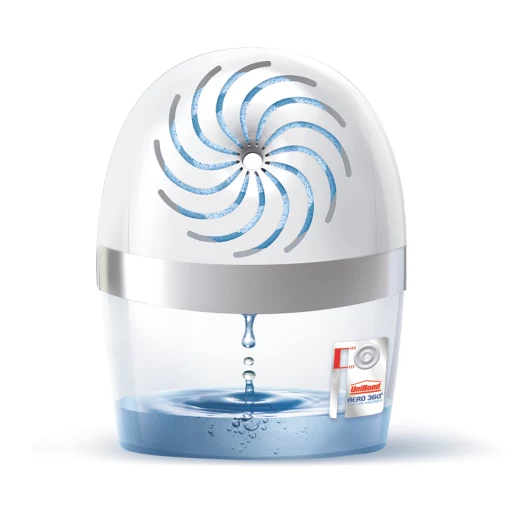Damp impacts health by causing mould on walls, furniture, clothing, wallpaper and many more. No one wants to experience the negative health impacts of a damp home.
What is Damp?
Damp is caused by excess moisture in a building. This excess moisture is either making its way into your property from outside, due to disrepair or it is caused by condensation that has formed within the building.
Condensation occurs when water, as a gas, changes to water, as a liquid, on a colder surface. Condensation is a natural result of living in the property. The challenge is to manage it.

There are steps that can be taken to reduce the risk of damp and condensation. This newsletter explains in more detail how we can help to eliminate damp that is caused by building defects and the measures you can take too control condensation and provides some pointers on spotting the different types of damp.
How BCHA can help you with damp problems from an outside source or caused by disrepair?
- Water leaking from the ceiling or roof area.
This is most likely due to a leaky roof. This type of issue should be reported as soon as possible to Wrekin Housing Trust on: 0300 123 4474 so a tradesman can visit to confirm which repairs are required. Contact us if you do not receive a prompt response.
2. Water or Damp on or running down external walls.
A leak of this type is in most cases from broken or blocked guttering or downpipes. Again, this type of leak should be reported as soon as possible to Wrekin Housing Trust so a tradesman can visit to carry out repairs or clear the gutters.
3. Damp or water leaking from the room above.
This is usually a leak from faulty pipework and in most cases from the bathroom above. Again, this type of leak should be reported as soon as possible to Wrekin Housing Trust so a tradesman can visit the property.
4. Damp/Black mould.
Typically found around windows and doors, walls, ceilings and behind furniture. This type of damp is caused by condensation, which occurs from cooking, bathing and a combination of low air movement and limited heating. If you have this type of damp in your property, please contact BCHA directly so that an appointment can be made to investigate the problem. In many cases, this can be addressed immediately. The tradesman can also give advice on how to prevent its reoccurrence, cleaning measures and any repairs that need to be arranged by BCHA.
5. Damp on the lower areas of internal ground floor walls.
This type of damp is not generally associated with black mould, but normally shows as a wet mark or patch near the level of the floor and could be rising damp. If you have this type of damp in your property, please contact BCHA directly to make an appointment with a surveyor. Our specialist will investigate the problem further and arrange any necessary remedial measures.
6. Fit extraction fans.
We can also improve your home by fitting extraction fans in your home. This service is mainly used in kitchens and bathrooms, to reduce the amount of condensation and improve the air quality in the home. Upon request, we can also install fans in other rooms such as conservatories, box rooms, and basements.
7. Insulate your home.
We aim to improve all our homes to Energy Efficiency Level C and above, therefore, if your EPC classified for D or below we can insulate you home. Contact us on 0121 382 5105 if you feel your wall needs to be insulated.
What is mould?
Black mould is a type of fungus that grows and develops in damp or humid conditions. Depending on how serious the mould problem is, it can vary in appearance. Black mould starts to produce spores. These spores are like seeds and allow mould to keep reproducing and growing. It is these spores that are responsible for most health problems caused by damp and mould in the home. Mould grows better on surfaces with high amounts of condensation.
How can you prevent Damp & Mould in your home?
- Ventilation – while cooking open a window. A well-ventilated home will help reduce moisture by allowing air circulation through your home, including inside cupboards and wardrobes.

- Cook your meal with the pan lid on and turn the heat down, once the water has boiled.
- Only use the minimum amount of water for cooking vegetables.
- Remember to open a window and close the door behind you when you’ve finished cooking or bathing for at least 15 minutes to help remove the condensation from the room.
- When filing the bath, run the cold water first then add the hot – it will REDUCE the steam which leads to condensation by up to 90%. After having a bath or shower, close the door and open the window until the moisture has gone to stop it reaching other parts of the house.
- Wipe down visible condensation from sills, windows, or silicone around the bath etc. after a shower can help.
- Ensure the door is closed, whilst taking a shower, to prevent moisture escaping from the room.
- Avoid drying laundry on radiators. Drying clothes on a radiator causes a lot of condensation. Avoid drying your clothes in the bedroom, as the heating is usually lower. Moreover, we breathe out moisture during the night, which adds to the moisture from the clothes.

- Dry washing outdoors, on a line if possible, or leave it in the bathroom with the door closed and the window open or extractor fan on.
- Extractor Fans should be automatically humidistat controlled – not solely activated by a light switch, however, if you got a manual one does not forget to turn it on while cooking and after using a shower or bath.
- If you have a tumble dryer, make sure it is ventilated to the outside or that the tumble dryer is of the condensing type. Also remember to regularly empty the tumble dryer water container tank.
- Do NOT use gas cooker to heat your kitchen as this increases CO2 and it produces moisture when burning gas (you will notice the windows misting up).
- Keep kitchen and bathroom doors shut to stop moisture moving around your home.
- Heating – condensation is often a problem in under-heated homes. Remember to set the radiator to number one in rooms that you are not using. This prevents the room temperature from becoming too low.
- Invest in a good dehumidifier – ideal for removing excess moisture and controlling damp and condensation at your house. We recommend a non-electric which you can purchase in any shop or online.


- Do NOT block unused chimney breasts – ask us to fit a ventilation/air brick and permanent ventilation if this is not already in place.
- Do NOT block ventilation points in the bathroom and kitchen.
- If you have trickle vents above the windows, keep them open all the time.
- Keep your home clean. Regular cleaning can help prevent mould growth. Clean any visible mould with a solution of vinegar and water or a commercial mould cleaner.
How to clean the mould?
Regular cleaning of mould is extremely important. To remove mould, you should prepare some equipment such as: mask, gloves, googles, sponge, small bucket, and anti mould products. You can buy these in your local shop or chemist in a spray bottle or professional anti mould Kits from specialists’ suppliers.

To remove mould, wipe down walls and window frames with the anti-mould product. Follow the manufacturer’s instructions for safety and best results for long term prevention. Remember to always open windows and ventilate the room for a few hours, allowing the area to dry thoroughly. After that, re-decorate the wall using a good quality fungicidal paint to help reduce mould. When wallpapering, use a paste containing fungicide to inhibit further mould growth. Also, dry clean mildewed clothes and shampoo carpets.
Be aware of the fact that disturbing the mould by brushing or vacuum cleaning can increase the risk of spore distribution and respiratory problems. Contact us on 0121 382 5105 for advice on cleaning areas of mould growth in your home.
How does it affect your health?
Mould produces allergens (substances that can cause an allergic reaction), irritants and, sometimes, toxic substances. Therefore, inhaling or touching mould spores can cause sneezing, a runny nose, red eyes, and skin rash. Moulds can also cause asthma attacks.
If you have mould or damp, it’s important to find out why you have excess moisture in your home. When you know what’s causing the damp, you can make sure the issue is fixed or take steps to limit the moisture in the air. We want to know if you have a mould problem in your home. Please contact us on 0121 382 5150. However, if it’s only a small amount, you may be able to remove it yourself following advice in this leaflet.
We understand that the cost of heating is expensive now. However, there are some ways to reduce the cost of heating your home, such as using energy-efficient appliances, taking advantage of energy-saving features, and using a programmable thermostat.
Additionally, some companies may offer incentives for using renewable energy sources or energy-efficient appliances. If you are struggling with energy bills, please contact us for advice. We will provide you with relevant information.
Mould and mental health
We take the health and safety of our tenants very seriously and we want to know if you have damp and mould problems in your home. Please contact us so we can help to resolve any damp and mould problems.
Summarising this article you should remember at least 10 about condensation and mould:
- Mould grows better in damp areas with high amounts of condensation.
- Avoid drying clothes indoors.
- Keep your home well ventilated.
- Report immediately any leaks at your property.
- Use mould-resistant cleaning materials.
- Water is condensed in a house when it comes into contact with a cold surface.
- Keep your home clean.
- Open windows for short periods of time to allow fresh air to circulate and reduce moisture.
- A warmer temperature will cause evaporation, removing water from your home.
Inspect your home regularly to catch any damp or mould issues early on, before they become more severe and difficult to fix.
By following these simple steps, you can help prevent damp and mould from taking hold in your home. It’s important to address these issues as soon as possible to prevent them from becoming more severe and difficult to fix.
Please also share this information with other members of your family.
If you have any problems with damp or condensation, please contact us on 0121 382 5105.
Be vigilant, proactive, and clean any mould as soon as it appears!










